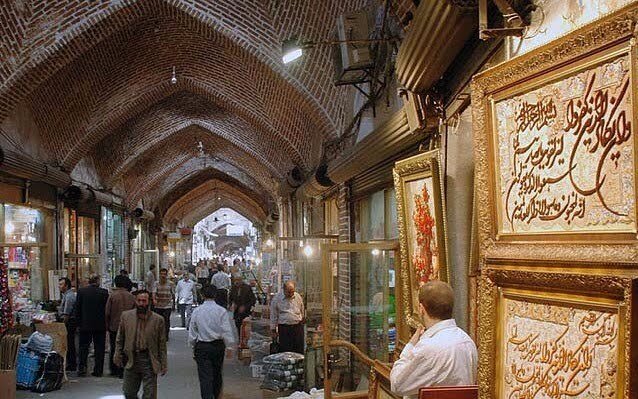Historical bazaar in Saveh undergoes restoration

TEHRAN – A fresh round of restoration has commenced on the centuries-old bazaar of Saveh, which comprises hundreds of shops laid out along the mazing vaulted alleys and thoroughfares.
The public market dates from the Safavid era (1501-1736) and it is one of the top destinations for sightseers visiting the central Iranian city.
Moreover, the property embraces a scenic mosque and some Timches (small arcaded courtyards each dedicated to a single type of business).
Bazaars in the ancient Islamic world were vividly described in the folktales of “The Thousand and One Nights.”
Bazaars are typically roofed for protection against the hot desert sun, either with a single roof, with individual vaulted cupolas or domes, or with awnings.
In Iranian culture, bazaars have made great contributions to commercial activities. Meanwhile their extended activities can be traced to social, cultural, political, and religious roles.
Most mazes and passages offer certain commodities such as carpets, metalwork, toys, clothing, jewelry, kitchen appliances, traditional spices, herbal remedies, and natural perfumes. One can also bump into colorful grocery stores, bookbinders, blacksmiths, tinsmiths, coppersmiths, tobacconists, tailors, flag sellers, broadcloth sellers, carpenters, shoemakers, and knife-makers.
In addition, there are divided carpet sections in a bazaar that enable visitors to browse hand-woven Persian carpets and rugs. From another point of view, bazaars are also synonyms for foods, with their unmissable colorful stalls of vegetables, herbs, and spices. Yet, most of these ingredients might be mysterious to a foreign eye.
Browsing through a traditional bazaar may provide new experiences and fresh points of view on ancient Iran. Such excursions can be made either in person or by “off-the-beaten-track” tours. Not only it’s an opportunity to discover dozens of unique local ingredients, but it’s also a chance to taste street foods and delicacies, in some traditional bakery known only by locals and shopkeepers.
While roaming over a vaulted bazaar, people-watching and even mingling with them is one of the best ways to take the pulse of the ancient land.
AFM
Leave a Comment